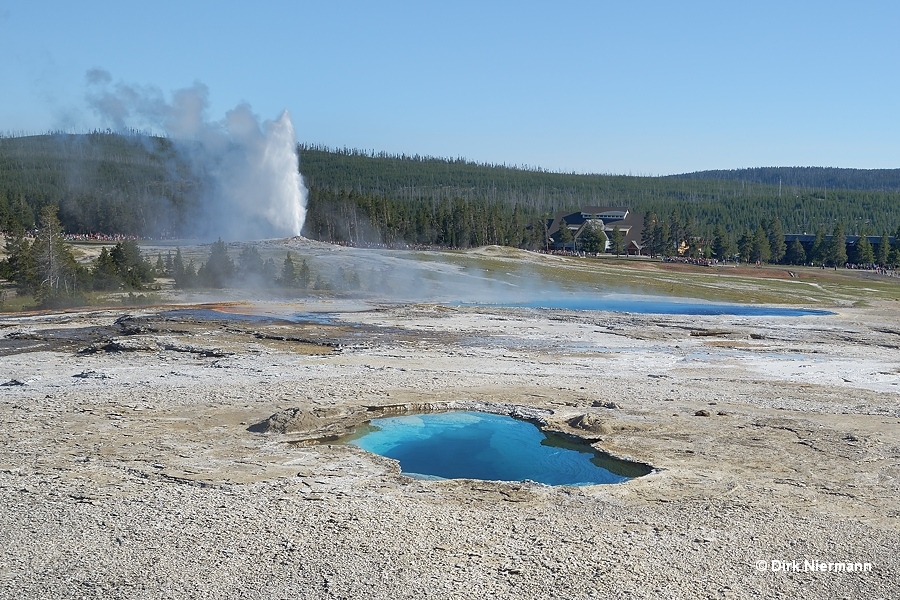Upper Geyser Basin of Yellowstone
The Upper Geyser Basin is located in the Firehole River Valley, whose margins are formed by rhyolitic lava flows that erupted 100,000–160,000 years ago. It exhibits a particularly high number of thermal groups, 22 in total, and features around 300 geysers, the largest concentration all over the world. Nearly all of them line Firehole River closer or a little bit further away. Interestingly, this connection between hot springs and streams is often observed in other thermal areas, too, and it may be attributed to the coming-together of the essential elements water and heat in the deepest gullies of surface topography. Throughout the whole Upper Geyser Basin hot springs and geysers have probably been continuously active since the Holocene (8000 years before present), as found by radiocarbon dating of sinter drilling samples.

Old Faithful Geyser for sure is the most famous and most popular feature here, even if it's neither the tallest, nor the most regularly, nor the most frequently erupting geyser of the Upper Geyser Basin. Nevertheless, in combination of all the aspects its performance, maintained at least since it had been discovered in 1870, leads to an outstanding feature in the world of geysers.
Basically, there are two routes for exploration, running from southeast to northwest along the main attractions. One of them is the paved Old Road, closed to motorized vehicles since 1972, but open to hikers and bicyclists. The Old Road connects the Old Faithful area with Morning Glory Pool via Castle Geyser and Grotto Geyser. Half way near Daisy Geyser it branches off to Biscuit Basin or, as a hiking only trail, to Black Sand Basin. The second route, mainly running at the other side of Firehole River and only open to hikers, starts at Old Faithful Geyser and leads through Geyser Hill Group, Sawmill Group, Grand Group, and Giant Group to join the old road at Grotto Geyser. Beyond Morning Glory Pool you may continue your hike through Cascade Group to Biscuit Basin.